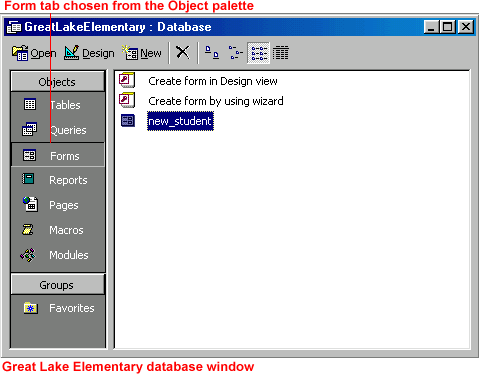
In the vast landscape of database management, efficient data entry is paramount for maintaining accurate and comprehensive datasets. Microsoft Access 2000, a pioneering relational database management system (RDBMS), empowers users with versatile tools and features for adding form records with precision and ease. In this extensive guide, we embark on a comprehensive exploration of adding form records in Access 2000, unraveling various methods, strategies, and best practices to enhance data entry efficiency and accuracy.
Understanding Form Records Addition
Before delving into the intricacies of adding form records in Access 2000, it’s essential to grasp the fundamental concept of form records within the database ecosystem. In Access 2000, a form record represents a single instance or entry of data within a form interface. Each record typically corresponds to a row in a table and encompasses fields representing specific attributes or properties of the data being stored. Forms provide users with a structured and user-friendly interface for entering, viewing, and editing data, facilitating seamless data management workflows.
Methods of Adding Form Records
Access 2000 offers users a multitude of methods for adding form records, catering to diverse preferences and workflow requirements:
- Data Entry Forms: Access 2000 allows users to create custom data entry forms tailored to their specific data input needs. The Data Entry Form Wizard simplifies the process of creating data entry forms by guiding users through the steps of selecting tables, fields, and layout options. Once the form is created, users can input new records directly into the form interface, leveraging intuitive controls such as text boxes, drop-down lists, and buttons.
- Navigation Forms: Navigation forms provide users with a centralized hub for accessing and navigating through various forms and reports within an Access database. Users can design navigation forms to include buttons or hyperlinks that launch specific data entry forms for adding new records. Navigation forms streamline the process of accessing and adding form records, enhancing user productivity and efficiency.
- Macro Actions: Access 2000 offers a wide range of macro actions that enable users to automate data entry tasks and streamline form record addition processes. Users can create macros to perform actions such as opening specific forms, setting default field values, or executing data validation checks before adding new records. Macros provide users with a powerful toolset for enhancing form record addition workflows and enforcing data integrity.
- Visual Basic for Applications (VBA): Advanced users and developers can leverage VBA programming in Access 2000 to create custom form record addition routines and automation scripts. VBA enables users to implement complex logic, handle dynamic data entry scenarios, and integrate with external systems or processes. By harnessing the power of VBA, users can customize and extend Access 2000’s functionality for specific data entry requirements.
Best Practices for Adding Form Records
While adding form records in Access 2000 is relatively straightforward, adhering to best practices can optimize efficiency, accuracy, and data integrity:
- Data Validation: Implementing data validation rules and constraints helps maintain data integrity and consistency during form record addition. Access 2000 allows users to define validation rules for form fields, ensuring that only valid data entries are accepted. Validation rules can be enforced using built-in features such as input masks, field properties, or custom validation expressions.
- Default Field Values: Setting default values for form fields can streamline the data entry process and reduce user input errors. Access 2000 allows users to specify default values for form fields, automatically populating new records with predefined values. Default values can be applied to fields based on predefined criteria or user preferences, enhancing data entry efficiency.
- Error Handling: Implementing robust error handling mechanisms helps mitigate the risk of data entry errors and ensures smooth form record addition processes. Access 2000 allows users to create custom error handling routines using VBA code, enabling them to handle runtime errors, display informative error messages, and gracefully recover from unexpected situations.
- User-Friendly Interface Design: Designing user-friendly form interfaces enhances the user experience and encourages efficient data entry practices. Access 2000 offers a variety of design tools and layout options for creating visually appealing and intuitive form interfaces. Users can customize form layouts, colors, fonts, and controls to optimize usability and facilitate seamless data entry.
Conclusion
In conclusion, mastering the art of adding form records in Access 2000 is essential for proficient database management and data entry. By leveraging the diverse methods, strategies, and best practices outlined in this guide, users can streamline the process of adding form records, uphold data integrity and accuracy, and unlock the full potential of Access 2000 for efficient data management. Whether you’re a novice user or an experienced database administrator, proficiency in adding form records empowers you to navigate the complexities of database management with confidence and precision.